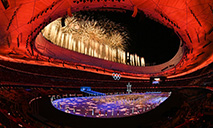Timeline: Development of Russia-Ukraine conflict
KIEV, Feb. 24 (Xinhua) -- Russian President Vladimir Putin on Thursday authorized "a special military operation" in Donbass, and Ukraine confirmed that military installations across the country were under attack.
The international community has expressed deep concerns over the Russia-Ukraine conflict. Here is a timeline of some major events related to the current crisis:
Feb. 24, 2022
-- Putin on Thursday authorized "a special military operation" in Donbass.
"Our plans do not include the occupation of Ukrainian territories. We are not going to impose anything on anyone by force," Putin said in a televised speech to the nation, noting that Russia's move is in response to "fundamental threats" of the North Atlantic Treaty Organization which has expanded to eastern Europe and brought its military infrastructure closer to Russian borders.
-- According to the Russian Defense Ministry, the Russian Armed Forces are destroying "military infrastructure, air defense facilities, military airfields, aviation of the Ukrainian Armed Forces" with high-precision weapons, not targeting Ukrainian cities.
-- Ukraine on Thursday severed diplomatic relations with Russia. Ukrainian President Volodymyr Zelensky declared martial law in the country following Russia's military operation.
Feb. 21, 2022
-- The Russian Security Council held an extraordinary meeting, when the country's top officials supported the recognition of Lugansk and Donetsk.
-- Putin signed two decrees recognizing Lugansk and Donetsk as independent and sovereign states.
At a ceremony held in the Kremlin, Putin also inked the Treaty of Friendship, Cooperation and Mutual Assistance between Russia and Lugansk and Donetsk respectively.
-- Through a statement attributable to his spokesperson, UN Secretary-General Antonio Guterres called for "peaceful settlement" of the conflict in eastern Ukraine, in accordance with the Minsk Agreements, as endorsed by the Security Council in resolution 2202 (2015).
-- At the Security Council emergency meeting on Ukraine, China's permanent representative to the United Nations, Zhang Jun, called on all parties concerned to seek "reasonable solutions" to the Ukraine issue.
Feb. 18, 2022
-- An explosion occurred close to "DPR government building." Local armed groups in eastern Ukraine ordered the evacuation of civilians to Russia, citing the danger of a possible military offensive.
Feb. 17, 2022
-- The Ukrainian military claimed that local armed groups in eastern Ukraine launched shelling on the area controlled by government forces. Local armed groups in eastern Ukraine accused the Ukrainian government forces of first using heavy weapons to attack areas under their control. Tensions in eastern Ukraine continued to escalate.
Feb. 2, 2022
-- The United States decided to deploy additional troops to Europe, including 1,000 troops to be repositioned to Romania and another 2,000 troops to be sent from the United States to Germany and Poland, in preparation for what it claimed to be an "imminent" Russian invasion of Ukraine.
Jan. 26, 2022
-- U.S. Secretary of State Antony Blinken announced that the United States has delivered a written letter to Russia addressing Moscow's concerns amid escalating tensions on Ukraine's border.
Jan. 22, 2022
-- The Ukrainian Defense Ministry said the first shipment of military aid from the United States arrived in Kiev.
Jan. 10-13, 2022
-- The latest round of talks aimed at defusing tensions between Russia and the West within the framework of the Organization for Security and Cooperation in Europe ended without a breakthrough as both sides warned of potential escalation.
Dec. 10, 2021
-- The Russian Foreign Ministry demanded "legal guarantees" that NATO wouldn't expand eastward.
Feb. 7, 2019
-- The Ukrainian parliament passed a constitutional amendment stating Ukraine's commitment to joining NATO.
Feb. 12, 2015
-- The leaders of Ukraine, Russia, Germany and France announced a peace deal in the Belarusian capital of Minsk, which envisaged a ceasefire between Ukrainian government troops and local armed groups in eastern Ukraine.
Dec. 23, 2014
-- The Ukrainian parliament renounced Ukraine's "non-aligned" status with the aim of deepening cooperation with NATO.
Sept. 5, 2014
-- Then Ukrainian President Petro Poroshenko and local armed groups in eastern Ukraine signed a ceasefire protocol in Minsk, where envoys from the two warring sides as well as Russia and the Organization for Security and Cooperation in Europe held talks for a possible political solution to the crisis.
April 2014
-- Unrest erupted in eastern Ukraine, where protesters seized government buildings, demanding a referendum on autonomy and closer ties with Russia.
February 2014
-- Amid rising protests, Ukraine's parliament voted to dismiss then President Viktor Yanukovych and set early elections.
November 2013
-- The Ukrainian government suspended the signing of partnership agreements with the European Union to avoid straining ties with Russia, triggering widespread protests, which soon snowballed into a violent nationwide movement against the authorities.
Photos
Related Stories
- Biden announces additional sanctions against Russia, more troops to Europe, amid Ukraine crisis
- IMF chief "deeply concerned" about Ukraine crisis
- Moldova declares 60-day state of emergency
- U.S. aviation regulator expands no-fly zone to include Ukraine, Belarus, parts of Russia
- Russia's rouble exchange rate plunges after launching military operations in Donbass
Copyright © 2022 People's Daily Online. All Rights Reserved.










